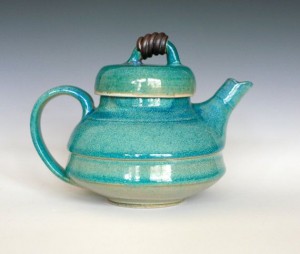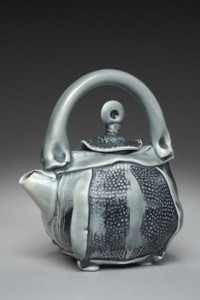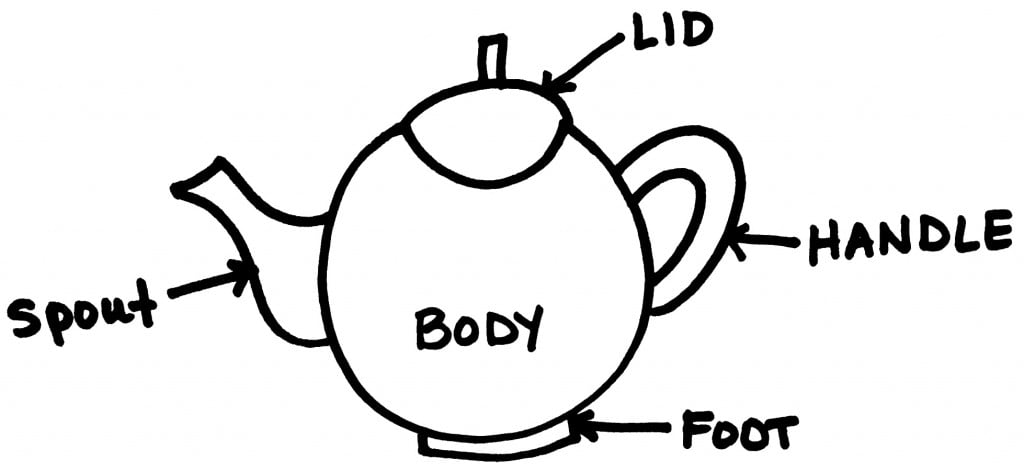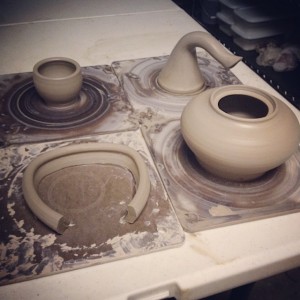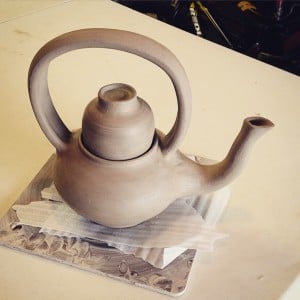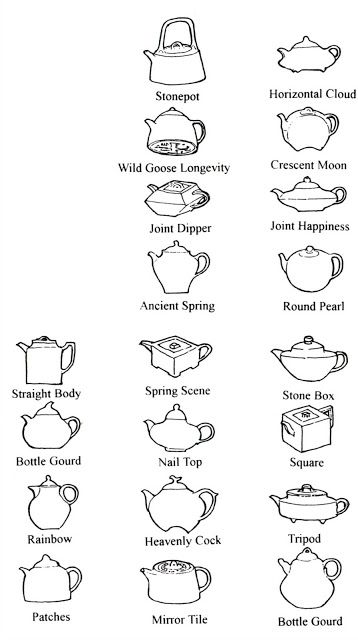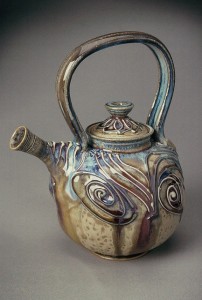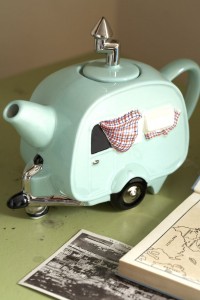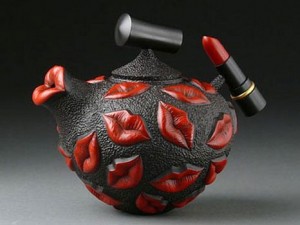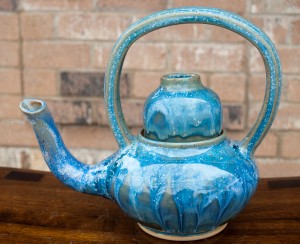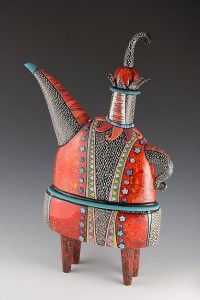For my wheel throwers: making a teapot combines everything you’ve learned so far about using the wheel to throw clay. It’s a challenging exercise, and it may require several tries to get it right. Don’t give up! If you end up making a few nonfunctional teapots, you can always turn them into pieces of sculpture.
Teapot by Sticks & Stones Studio
Planning Your Teapot
Before you begin, decide on your desired teapot shape. It can be squat, tall, narrow, or cone-shaped. Make a simple drawing of the shape and outline the profile. Then sketch a lid. As you consider your ideas about a teapot, ask yourself:
- Will the lid be flat or domed?
- Will it rise out of the pot or sink into the opening?
- What type of knob will it have – thrown or hand-built?
- Does the lid shape complement the form?
- Do you want to place the handle over the lid, on top of the shoulders of the pot – or on the side, opposite the spout?
- What size spout complements the shape?
Post sketches to your blog!
Making Your Teapot
Make sure you use the same clay for every part of your teapot: body, lid, spout, and handle. Throw or form these pieces all at the same time so that they will shrink at the same rate, fit together better, and the measurements will be more accurate. You can assemble the pieces at another time, but remember to cover them in plastic to keep them workable.
Teapot by T. Jeffreys
- Throw or hand-build the body of the teapot.
- Measure the diameter of the opening and create a flanged lid.
- Pull or throw the handle. Shape it and allow it to stiffen.
- Throw or hand-build the spout (and a few extras).
- Let all pieces stiffen to leather-hard.
- Trim or attach a foot ring on your pot before you attach the spout and handle.
- Hold the spout against the side wall and adjust its fit.
Note: Make sure the top of the spout is as high as or higher than the top of the pot. If the spout is too low, tea will spill out when the pot is filled.
“Lip Service Teapot” by Dixie Biggs
- Trace around the spout on the wall.
- Supporting the wall, cut a series of holes within the outline.
- Smooth rough edges with a damp sponge.
- Score and slip the base of the spout and the traced outline on the pot.
- Press the two pieces firmly together and smooth around the join. You can reinforce the join with a thin coil and smooth it with your finger or the edge of a wooden tool.
- Balance the placement of the handle.
- Score, slip, and join the handle to the pot.
- Let your teapot dry slowly with the lid in place.
Teapot by Ms. Long – lid also doubles as a tea cup!
Post your GREENWARE to your blog before turning it in to be fired.
- Bisque fire, decorate, and glaze fire.
More Teapot Ideas from Pinterest How to Hand-build an Expressive Teapot Set Using Soft Slabs How to Make an Inverted Strainer The 30 Minute Teapot

